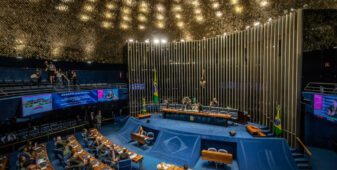Insight Focus
- Indonesian producers are expected to tender urea next week.
- Chinese producers have 300k tonnes at port awaiting export.
- There is too much urea chasing too little demand.
The global urea market price has now fallen to a level at most origins where we could expect prices to increase, albeit slightly North Africa this fell to an assessed range of USD 395-410 FOB vs last week’s range of USD 420-455 FOB whilst the Middle East reached a range of USD 380-385 FOB vs USD 390-400 FOB the week before.
Indonesian producers, which have been absent from the export market for a time, are expected to return to the market with a tender next week. In addition, Chinese producers are said to be having around up to 300,000 MT at the ports cleared for export.
In other words, there is too much urea available chasing lack of demand.
Brazilian CFR prices fell to an assessed range of USD 375-390 vs last week’s range of USD 400-425. SE Asian producers are at anywhere between USD 400-420 FOB with focus on contract shipments already priced.
India is expected to come back into the market soon now that the national budget has been announced. Fertilizer subsidies to be applied from April 2023 to April 2024 have been cut by a minimum of 22% now at INR 1.75 trillion (USD 21.4 billion). However, India alone cannot carry the global urea market, others markets need to come back in with substantial demand, particularly Brazil, the US and Europe. In addition, there will be demand coming from major urea import markets like Thailand and Australia which imports a combined close to 4.5-5 million MT in a normal year, about 10% of the global off-shore trade of urea.
News has emerged that ICL of India and FOSKOR of South Africa have agreed on a Q1/23 phosphoric acid deal at a price of USD 1,050 for 100% P2O5, a drop of USD 125 PMT from the Q4/22 deal at USD 1,175 PMT CFR. The Q2/Q3/22 settlement was at USD 1,715 CFR, a drop of USD 655 PMT or 39%. Subsidy cuts in India combined with lower global demand are the backdrops for this drop in prices. The drop in the India Phosphate & Potash subsidy allocation is 38% and if all applied to DAP, the new break-even price for DAP will be in the range of USD 595-605 CFR – this compared to the last Chinese origin DAP deal done in India at USD 660 CFR. Other suppliers are now offering at around the USD 700 CFR mark.
In other news, MAP prices in Brazil are staying put at around the 655-660 CFR range.
The global potash market has more or less come to a standstill with all eyes directed towards contract settlements in India now that the budget has been finalized as mentioned above. Expectations are now that a contract could be settled by the end of February with a price suggested between the usd 460-480 CFR range. However, there is also a line of thought that the price could be substantially lower than this now that BPC of Belarus seems to be able to circumvent any western sanctions. BPC is also rumored to be in discussion with counterparties in Indonesia for a GG deal. Brazil being the largest MOP market in the world is a focus of BPC as well and it is rumored that BPC will increase sales to Brazil with up to 2 million MT. Both the Indonesia and Brazil deals will certainly put pressure on global pricing of MOP.
Ammonia is under massive pressure with scant demand In Europe and with OCP of Morocco said to be operating at 50% capacity thus disappeared from the import market.. In addition, gas prices in Europe are around the USD 16-18 MMBTU range making production cost of ammonia in Europe estimated at between USD 650-700 which is less than the index price of USD 805-810 CFR. The February Tampa supply ammonia settlement between Yara and MOSAIC of USD 790 CFR, a drop from the previous month price of USD 975, has failed to ignite the market and the expectation is that the March settlement could be much less.







